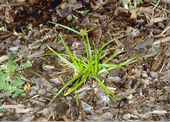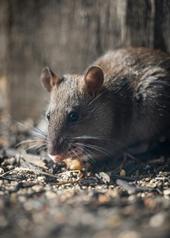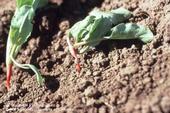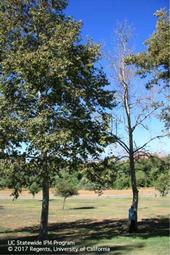- Author: Belinda Messenger-Sikes

Nutsedges are aggressive and persistent weeds that commonly infest lawns, vegetable and flower gardens, and landscapes. These perennial sedges are a problem in lawns because they grow faster than turfgrasses and result in non-uniform turf. In landscape beds, nutsedge can grow up through mulches–even plastic mulches!
Yellow nutsedge grows throughout California while purple nutsedge can be found mostly in the south of the state and the Central Valley. Once established, nutsedge is difficult to control because it forms tubers in the soil that can live up to three years. The best approach is to prevent the weed's spread.
To help you identify and better manage this troublesome weed, UC IPM has updated the

Rats can contaminate our food, damage structures, and spread diseases. To help residents and urban pest professionals safely and effectively manage rats, UC IPM has updated the Pest Notes: Rats publication. This revised fact sheet is authored by UC Cooperative Extension Human-Wildlife Conflicts advisor Dr. Niamh Quinn, a recognized expert in urban rat management. Updates include additional information on rat damage, specific sanitation tactics for both Norway and roof rats, tips for rodent-proofing your home, and new illustrations to clearly show correct placement of traps. Rules and regulations regarding rodenticide use in California are...

Springtime planting is almost here but don't rush to plant seeds until the soil has warmed up! Planting seeds too soon, when the soil is cold and wet, risks losing them to damping-off, a disease caused by fungi and oomycetes in the soil. Learn more about this common disease in the newly updated Pest Notes: Damping-off Diseases in the Garden written by UC IPM Director Dr. Jim Farrar and UCCE emeritus advisor Ed Perry. They cover the biology of the pathogens, identification of the disease, and how to prevent damping-off when growing transplants or seeding directly into the ground.

Some pest problems can be easily handled at home yourself. But if your pest issue is a bit more serious, or you don't have the time or tools to address it yourself, hiring a pest control company might be your best option. Pest management professionals are trained in pest control regulations and methods as well as the principles of integrated pest management (IPM). They can accurately identify your pest and get rid of the problem safely and effectively. While their services may seem costly, the investment can actually save you time and money in the long term.
Before hiring a pest control company, try to do some research on your suspected pest and its management. Consult the

They may seem too tiny to do much damage to a mature, healthy tree, but invasive shothole borers (ISHB) are responsible for the deaths of tens of thousands of trees in Southern California. These beetles bore into trees and infect them with Fusarium dieback, a fungal disease that kills the trees. Many native California trees like California sycamore, valley oak, and arroyo willow can be killed when invasive shothole borers attack them.
While these pests are currently only found in Southern California, they could spread to many other parts of the state. Limiting the infestation will reduce their impact. Controlling the beetles is difficult but includes regular monitoring of trees to quickly identify sources of...


